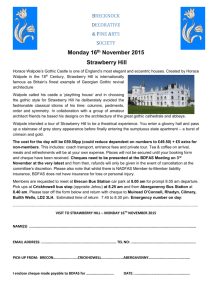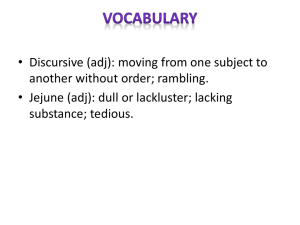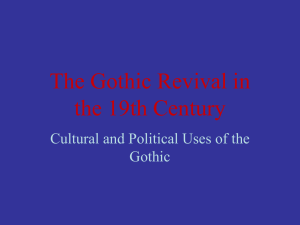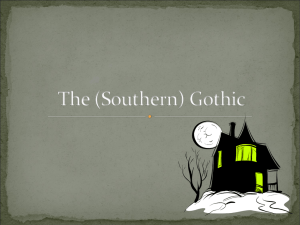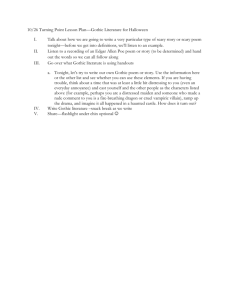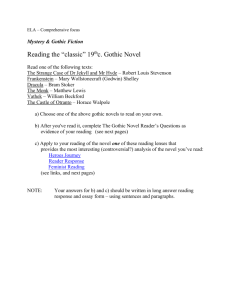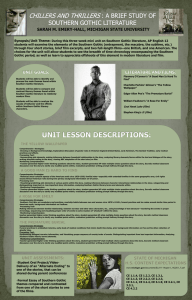The Most Dangerous Game - Mulvane School District USD 263
advertisement
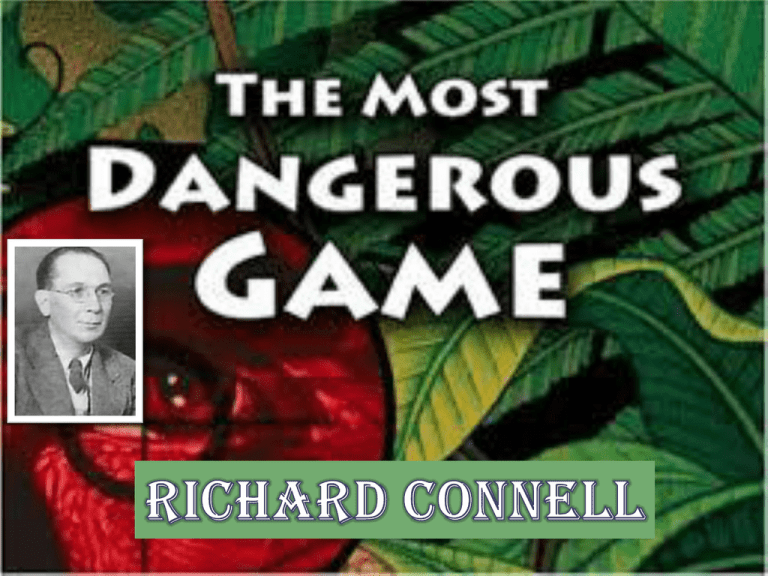
The Most Dangerous Game Meet the Writer Famous for One Story By the time he dreamed up Rainsford’s epic battle of wills with General Zaroff, Richard Connell (1893–1949) was already a seasoned writer, accustomed to seeing his work in print. He began writing early: As a ten-year-old cub reporter, he covered local baseball games for the newspaper his father edited in Poughkeepsie, New York. During his student days at Harvard, Connell wrote for both the college newspaper and The Harvard Lampoon, the school’s famous humor magazine. He went on to write hundreds of short stories, as well as novels and screenplays. Richard Connell Richard Connell Despite Connell’s tremendous output, only one story— “The Most Dangerous Game” (1924)—is still widely read. The story has not only fascinated readers for decades but has also intrigued filmmakers. This suspenseful tale has inspired four movies in the past seventy years. What accounts for the story’s enduring popularity? Nothing in it is especially believable—not the characters, not the plot, not even the violence. We are never really afraid that Rainsford will be chewed up by one of those hounds. Perhaps the answer is that “The Most Dangerous Game” is an adventure story, with all the appeal of a Hollywood scare-o-rama, complete with an elegant villain, his huge brute of a manservant, a castle, a dark jungle, bloodthirsty animals, and hideous mantraps. It is a fine example of a macho escape story. When we read it, we escape reality for a short time. We spend an hour or two away from real life and its problems. Despite its literary flaws, people rarely forget this story. Elements of Gothic Fiction Gothic fiction (sometimes referred to as Gothic horror) is a genre of literature that combines elements of both horror and romance. As a genre, it is generally believed to have been invented by the English author Horace Walpole, with his 1764 novel The Castle of Otranto. The effect of Gothic fiction feeds on a pleasing sort of terror, an extension of Romantic literary pleasures that were relatively new at the time of Walpole's novel. Melodrama and parody (including self-parody) were other long-standing features of the Gothic initiated by Walpole. Horace Walpole Gothic Fiction The stock characters of Gothic fiction include tyrants, villains, bandits, maniacs, Byronic heroes, persecuted maidens, femmes fatales, monks, nuns, madwomen, magicians, vampires, werewolve s, monsters, demons, dragons, angels, fallen angels, revenants, ghosts, perambulatin g skeletons, the Wandering Jew and the Devil himself. Gothic Fiction Prominent features of Gothic fiction include terror (both psychological and physical), mystery, the supernatural, ghosts, haunted houses and Gothic architecture, castles, darkness, death, decay, d oubles, madness, secrets, and hereditary curses. The Most Dangerous Game by Richard Connell "The best sport in the world," agreed Rainsford. "For the hunter," amended Whitney. "Not for the jaguar."—”The Most Dangerous Game Indicate to what degree you agree with the following statements. Always • • • • Never I believe that it is alright to hunt and kill animals for food. I believe it is alright to hunt and kill animals just for sport. I believe that murder is wrong in every instance. I believe that murder is wrong when my life is in danger or when someone is wising me harm. • I believe that is alright to have fun even when someone else gets hurt. • I believe that all is fair in love and war. • I believe that animals have feelings such as fear The Most Dangerous Game Write your response to one of these questions in your reading logs… Essential questions:
